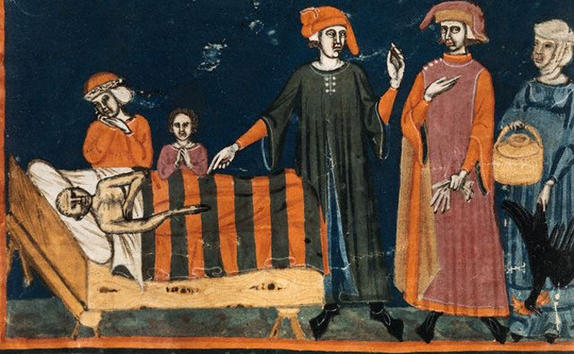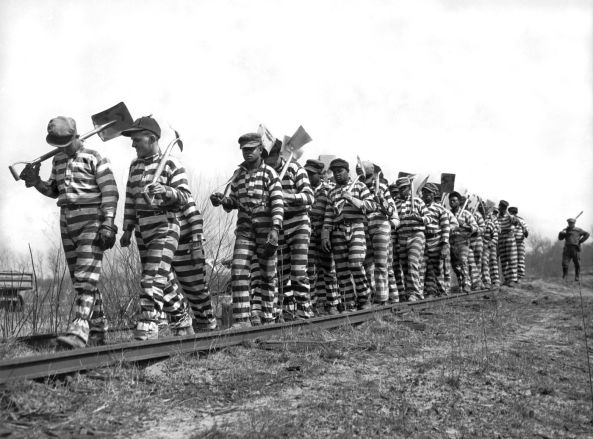 The Europeans imagine harem (if they must, that is) as the sort of an abode for the young and beautiful women of the Arabian fairy-tales of the One Thousand and One Nights. The series of remarkable photos, taken by Naser al-Din Shah Qajar, the real Shah of Iran in the late 19th century, might as well smash all the stereotypes.
The Europeans imagine harem (if they must, that is) as the sort of an abode for the young and beautiful women of the Arabian fairy-tales of the One Thousand and One Nights. The series of remarkable photos, taken by Naser al-Din Shah Qajar, the real Shah of Iran in the late 19th century, might as well smash all the stereotypes.
This dashing man is Naser al-Din Shah Qajar, the fourth Shah of Iran. He came to power in 1848 and ruled for 47 years — the longest reign in the 3000-year history of Iran.
According to historians, Nasser al-Din Shah Qajar was well educated for his time and established a reputation of a sybarite, so much so that it angered and annoyed his subjects.
One of Shah Qajar’s the many passions was photography. He loved taking pictures since his boyhood, when in 1844, at 13, he saw the camera for the first time. When Nasser al-Din came to power, he set up the first official photo studio in his palace.
“We were lucky that the king fell in love with photography because it was the king who started taking pictures. The Islamic clerics could not oppose him.” (Bahman Jalali, a veteran photographer and the former director of the Golestan Palace museum, a former royal home.)
In the 1870s, Russian photographer Anton Sevryugin opened his photo-studio in Tehran, and soon became the Shah’s court photographer. Sevryugin’s photographs are nothing less than a chronicle of Iranian life. For his services to the court of Iran he was awarded an honorary title.

The main entrance to the Golestan Palace. Photo by Anton Sevryugin.
Russian photographer was permitted to take pictures of the Shah himself, Shah’s male relatives, courtiers and servants.

Anton Sevryugin sets up a photo-shoot with the Shah.
A privilege of taking pictures of his harem of about 100 concubines, Shah bestowed only upon his own person. An ardent photographer, Shah developed and printed his photos in the palace photo-laboratory, kept them in satin albums stashed in an earthquake-resistant and bulletproof room at Golestan Palace.
These are a truly extraordinary photos, and for more reasons than one. Firstly, according to the Shiite law at the time, it was forbidden to make pictures, photograph and paint images of the peoples’ faces, especially visages of women. Only the most powerful man in the realm could afford to break the law.
Secondly, these pictures were remarkable because… well, because of their subject — the women of the Shah’s harem! Let’s take a look.
This is the Incomparable Anis al-Doleh — the favorite wife of the Shah.
Anis al-Doleh must’ve been truly beloved — she was the most frequent subject of the Shah’s photo shoots.


Anis is the one with a child on her lap with another woman of the Shah’s harem.

The Incomparable Anis al-Doleh making music and showing a glimpse of her legs.
Interesting that the ladies of the harem on the photos look quite modern for their time. Their stares into the lens are calm and confident, neither timid nor flirty.

Anis, the Soulmate of the Realm, is the one sitting.

Some of the Shah’s wives on a picnic with a cleric.
It is even conceivable that the women in the harem have been friendly with one another, judging from their group photos. On the picture above and numerous others, the Shah’s wives are captured wearing short skirts, not unlike a lush tutus — these skirts called shaliteh.
On the picture above and numerous others, the Shah’s wives are captured wearing short skirts, not unlike a lush tutus — these skirts called shaliteh. There is a story behind it. In 1873, Shah Qajar received an invitation from the Russian Tzar Alexander II to visit Saint Petersburg. During his visit, Shah attended a ballet performance. He was mighty fascinated by the Russian ballerinas and, upon his return, declared that the women of his harem must wear tutus — shaliteh. The headscarves, however, must have stayed on.
There is a story behind it. In 1873, Shah Qajar received an invitation from the Russian Tzar Alexander II to visit Saint Petersburg. During his visit, Shah attended a ballet performance. He was mighty fascinated by the Russian ballerinas and, upon his return, declared that the women of his harem must wear tutus — shaliteh. The headscarves, however, must have stayed on.

More tutus.
Thе photo below, taken by Shah Qajar, comes the closest (even if that) to the fairy-tale image of a harem concubine, complete with black eunuch and a calian.

Young concubine with calian.
Boris Dolgov, a senior fellow at the Center for Arab and Islamic Studies at the Institute of Oriental Studies, has the following to say about the photos (translation is mine):
“These are, indeed, pictures of women, and not hermaphrodites or males, as many might imagine. Clearly, such population (males and/or hermaphrodites) might have been kept in harems as well, but hidden away, since Koran does not allow such perversions. As for the “beauty” factor… Well, as we all agree, tastes differ a great deal from culture to culture and from person to person. Dark thick mustaches, adorning women’s upper lips, is rather typical for this ethnic group. It is also quite possible that the owner of a harem had special predilection for mustachioed ladies. Bushy eyebrows were fashionable at the time, and full figures were synonymous with beauty. Women in harems were fed fattening diets and their lifestyle wasn’t especially conducive of exercise or even active movement.” (Russian original is here.)
More to the story: Other sources say that it wasn’t Russian Anton Sevryugin after all, but a French photographer, Francis Carlhian, who set up the first official studio at the Shah’s palace. Also, this same article says that it has been Shah’s trip to Paris, not Saint Petersburg, where he went to see the ballet and then invented a new dress code for his wives.
In defense of the Russian source regarding ballet: The Shah’s trip to Saint Petersburg to visit the Russian royal court of Alexander II is well documented, complete with the record of the Shah’s attendance of a ballet.
However, one way or another, it doesn’t make much difference, does it? We are here for the pictures, aren’t we?

 Germany.
Germany. Hungary.
Hungary. Great Britain.
Great Britain. Turkey.
Turkey.


 In the Year of Our Lord 1374, a deadly disease swept dozens of villages along the Rhine River — a dance plague. Hundreds of people on the streets jumped and curled their knees with no beat or music, except, probably, that in the dancers’ head. They danced, sometimes for many days in a row, until their broken feet refused to hold them. Many died of exhaustion, stroke or heart attack.
In the Year of Our Lord 1374, a deadly disease swept dozens of villages along the Rhine River — a dance plague. Hundreds of people on the streets jumped and curled their knees with no beat or music, except, probably, that in the dancers’ head. They danced, sometimes for many days in a row, until their broken feet refused to hold them. Many died of exhaustion, stroke or heart attack. Interestingly, the Strasbourg authorities first decided to let folks dance all they want, hoping for a spontaneous cure. Two dance halls were opened in the city and a wooden stage was erected. Musicians were also invited to liven up the strange event.
Interestingly, the Strasbourg authorities first decided to let folks dance all they want, hoping for a spontaneous cure. Two dance halls were opened in the city and a wooden stage was erected. Musicians were also invited to liven up the strange event.


 But as it turned out, not only chickens fit this category, but little kids, weighing under 50 pound, too.
But as it turned out, not only chickens fit this category, but little kids, weighing under 50 pound, too.

 Jesus was condemned by the
Jesus was condemned by the  More recently, in August of 2013,
More recently, in August of 2013,  In order to familiarize yourself with all the temples of Thailand one need more than one day, one week or even a month. There are about 40 thousand temples, each with its own peculiarity. Perhaps one of the most interesting is the Buddhist temple of
In order to familiarize yourself with all the temples of Thailand one need more than one day, one week or even a month. There are about 40 thousand temples, each with its own peculiarity. Perhaps one of the most interesting is the Buddhist temple of 

 Wat Phra Dhammakaya is more than impressive no matter which way you look at it, with its huge dome at the center of the monastery adorned with a mind boggling three hundred thousand golden Buddhas. This is a lot more than the number of statuettes that made famous the
Wat Phra Dhammakaya is more than impressive no matter which way you look at it, with its huge dome at the center of the monastery adorned with a mind boggling three hundred thousand golden Buddhas. This is a lot more than the number of statuettes that made famous the 

 In 1999, however, and again, in 2002, it became the center of a scandal on a national scale. Wikipedia
In 1999, however, and again, in 2002, it became the center of a scandal on a national scale. Wikipedia  In 1310, in French town of
In 1310, in French town of

 To this day, there is no consensus about the origin of stripes’ bad reputation. Pastoureau suggests that it came from the free interpretation of biblical quote Do not put on two tunics (Mark 6:9.) Another hypothesis, secular one, is more “practical”: striped clothing conceal the silhouette, and this alone could be regarded as an attempt of camouflage. However, neither the first nor the second hypothesis can explain the reasons for the medieval Europeans’ hateful attitude toward striped garments.
To this day, there is no consensus about the origin of stripes’ bad reputation. Pastoureau suggests that it came from the free interpretation of biblical quote Do not put on two tunics (Mark 6:9.) Another hypothesis, secular one, is more “practical”: striped clothing conceal the silhouette, and this alone could be regarded as an attempt of camouflage. However, neither the first nor the second hypothesis can explain the reasons for the medieval Europeans’ hateful attitude toward striped garments. Diabolical nature of strips extends to the striped animals as well. Not only black, but striped cats, tigers, snakes and hyenas were considered to have diabolical traits. Although in the Middle Ages only very few Europeans knew of the existence of zebras, Catholic naturalists ranked zebras as “devils of animals.” Unsuspecting zebras were relinquished to this category until the age of Reformation when the new generation of zoologists dispelled this belief.
Diabolical nature of strips extends to the striped animals as well. Not only black, but striped cats, tigers, snakes and hyenas were considered to have diabolical traits. Although in the Middle Ages only very few Europeans knew of the existence of zebras, Catholic naturalists ranked zebras as “devils of animals.” Unsuspecting zebras were relinquished to this category until the age of Reformation when the new generation of zoologists dispelled this belief. The strips shed its diabolical designation at the end of the XVIII century. Revolution occurred not only in France and the New World, but also in the minds of ordinary people. Stripes were no longer seen as taboo. A fashion for striped fabric, from clothing to furniture upholstery and walls, took off with vengeance.
The strips shed its diabolical designation at the end of the XVIII century. Revolution occurred not only in France and the New World, but also in the minds of ordinary people. Stripes were no longer seen as taboo. A fashion for striped fabric, from clothing to furniture upholstery and walls, took off with vengeance. However, in 19th century, coming a long way from the Middle Ages, the fear of stripes in society was embodied in the striped prison uniforms. Around this time, the black-and-white stripes familiar from old movies came into vogue, marking the men in a way that would remain embedded in public memory.
However, in 19th century, coming a long way from the Middle Ages, the fear of stripes in society was embodied in the striped prison uniforms. Around this time, the black-and-white stripes familiar from old movies came into vogue, marking the men in a way that would remain embedded in public memory.  Slowly, as time went on, prisons began to eliminate the stripes for more neutral colors and the familiar worker-like jumpsuits. New York switched to grey in 1904 because, according to an
Slowly, as time went on, prisons began to eliminate the stripes for more neutral colors and the familiar worker-like jumpsuits. New York switched to grey in 1904 because, according to an 
 The
The 



 Ivan IV Vasilyevich (1530 – 1584) commonly known as
Ivan IV Vasilyevich (1530 – 1584) commonly known as



















